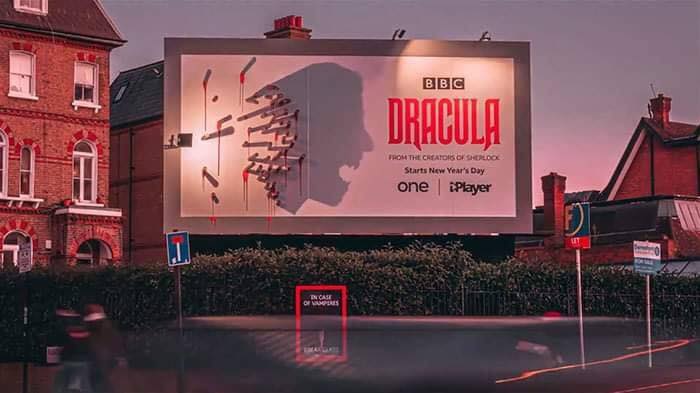The Power of Storytelling in Marketing
In marketing, storytelling is more than just a creative tool, it’s a mechanism, a channel that interacts with the customer’s brain, creating impactful and lasting impressions, for good or bad. In this piece, we explore how storytelling influences the brain and, in turn, consumer behaviour, by nurturing the interaction between brands and their consumers.
The Neuroscience of Story
Neuroscience activates far more than just the traditional language areas of the brain; research has shed light into the how the various regions that are activated during storytelling:
- Posterior Cingulate Cortex: Involved in visual and spatial processing, this area helps in understanding and visualizing narratives.
- Medial Prefrontal Cortex (mPFC): Linked to understanding others’ thoughts and feelings, the mPFC is crucial for creating empathy and emotional engagement with the story.
- Amygdala: This region processes emotions, making emotionally charged stories more memorable and impactful.
- Hippocampus: Essential for memory formation, the hippocampus plays a role in embedding information (in this case narratives) into long-term memory.
Why Use Storytelling?
At the heart of creative storytelling lies human connection and the potential to evoke powerful emotions, building a deeper connection between consumers and brands. By weaving narratives that resonate with emotions and values, brands can foster a sense of kinship with their audience, leaving a lasting impact on their perception of the brand.
We as humans are hardwired for story, skillful storytelling helps viewers and listeners understand the essence of complex concepts and ideas in meaningful and human ways. For this reason, storytelling should be embraced by marketers, to align communications effectively with brain processes.
Stories, and in particular personal stories, have the ability to illuminate fault lines, highlight oddities, and paint a picture of the past, present and future that is both compelling and easily understandable. Whether the stories are fictional or real is irrelevant to this effect so long as they are capable of emotionally connecting with the audience. These stories don’t necessarily have to be told verbally; narration isn’t limited to the use of language. It’s possible to tell stories without the use of words; these stories are usually accompanied by facial expressions, images and movements
Examples of Storytelling in Marketing
Storytelling naturally lends itself best to multimedia formats, particularly video. Video allows for the passing of dynamic information both visual and auditory. Some examplesof these are the videos below:
However, video’s power at storytelling doesn’t preclude other formats from being able to effectively utilise storytelling to make their advertisements resonate with audiences and leave an impression:


It’s worth noting that effective storytelling does not always rely on explaining everything in explicit detail, clever marketers will allow the audience to ‘fill in the blanks’. Visuals should be as simple to process as possible, but rich in information – the Tylenol, Imodium and Dracula pieces (below) of Out of Home attest to that.



Storytelling as a Persuasive Tool
The persuasive power of storytelling in marketing can be attributed to its ability to engage these brain regions, fostering emotional connections and memorable experiences, bridging attention and stimuli in the short term to brands and memory in the long term. By creating narratives that resonate not just on a cognitive level, but also on an emotional level, marketers can effectively influence consumer attitudes and choice-behaviour.
For instance, the concept of ‘transportation’ into a narrative world is a cognitive and emotional process that fully engages consumers. This engagement activates a network of brain regions, leading to the formation of vivid mental images and stronger emotional responses.
Effective storytelling in marketing uses these neural mechanisms to break through the clutter of the modern world, particularly in the marketing domain. By activating specific brain regions, stories in advertisements become more memorable, enhancing brand’s presence within the consumer’s mind.
From a digital standpoint, as platforms evolve, so does the approach to storytelling. The shift to digital media requires a nuanced understanding of how narrative structures and content can optimally engage the brain’s storytelling circuitry.
The narrative form of an advertisement can significantly influence its memorability and effectiveness. By structuring ads to resonate with the brain, marketers can create stronger connections between consumers and brands.
Conclusion:
The integration of neuroscience and marketing through storytelling offers a profound understanding of consumer engagement. By leveraging the neurophysiological aspects of storytelling, marketers can craft campaigns that not only capture attention but also resonate deeply with consumers, leading to lasting brand loyalty, engagement and memorisation.
REFERENCES
Aldama, F. L. (2015). The science of storytelling: Perspectives from cognitive science, neuroscience, and the humanities. Projections, 9(1). https://doi.org/10.3167/proj.2015.090106
Armstrong, P. (2020). Stories and the Brain. https://doi.org/10.1353/book.74953
Martinez-Conde, S., Alexander, R. G., Blum, D., Britton, N., Lipska, B. K., Quirk, G. J., Swiss, J. I., Willems, R. M., & Macknik, S. L. (2019). The Storytelling Brain: How Neuroscience Stories Help Bridge the gap between research and Society. The Journal of Neuroscience, 39(42), 8285–8290. https://doi.org/10.1523/jneurosci.1180-19.2019
Suzuki, W. A., Feliú-Mójer, M. I., Hasson, U., Yehuda, R., & Zarate, J. M. (2018). Dialogues: The science and power of storytelling. The Journal of Neuroscience, 38(44), 9468–9470. https://doi.org/10.1523/jneurosci.1942-18.2018
Vallejo, A., Efstathios, S., Guamán, M., Banegas, M., & Narvaez, A. (2019). The effectiveness of applying storytelling in advertising spots. Proceedings on Engineering Sciences, 1(2), 945–958. https://doi.org/10.24874/pes01.02.100 Zubiel-Kasprowski, M. (2016). Mirror Neurons In Storytelling Or About The Depth Of Processing In Marketing Communication. Torun Social Science Review, 1(1), 85–93.


